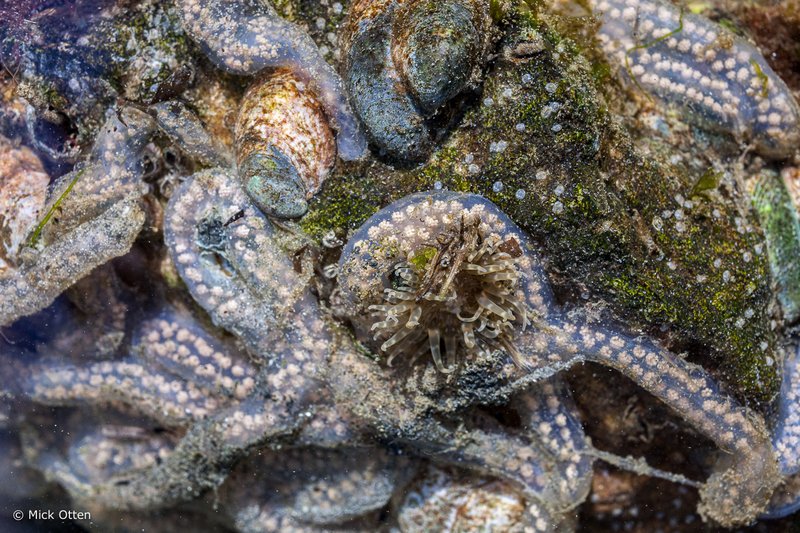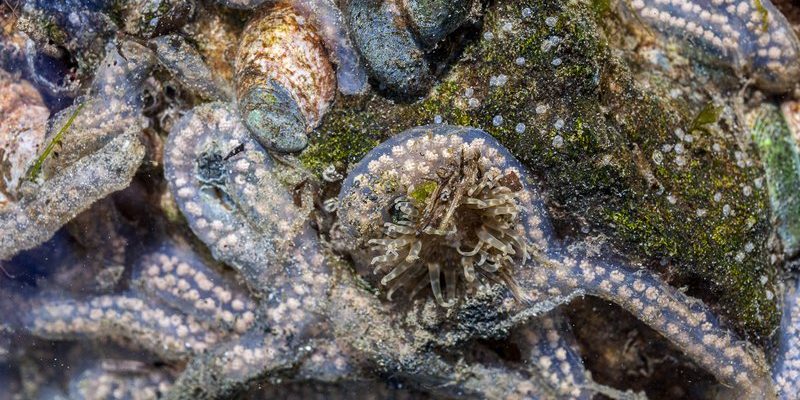
Why should we care about these long, mysterious worms? Well, just like the stars in the night sky help us understand our universe, studying bootlace worms can offer insights into the health of marine ecosystems. They are indicators of environmental changes and biodiversity. So, let’s dive in and explore the incredible world of marine biodiversity studies, focusing on these unique creatures and what they tell us about our oceans.
What Are Bootlace Worms?
Bootlace worms, or *Lineus longissimus*, are marine creatures that belong to the phylum Nemertea, also known as ribbon worms. What’s interesting about them is their astonishing length; they hold the title for the longest animal on Earth. But don’t let that length scare you! These worms are often found living buried in the sediment of shallow waters or creeping through seaweed.
These worms have simple bodies compared to many marine animals. They are elongated, cylindrical, and often covered in a slimy coating that helps them move through their environment. You might be wondering how they eat. Bootlace worms primarily feed on small invertebrates and can extend a proboscis—a sort of feeding tube—to capture their prey. Imagine sipping a smoothie through a straw; that’s how they experience dinner!
The Role of Bootlace Worms in Marine Ecosystems
Now that we’ve covered what bootlace worms are, let’s talk about why they matter. These worms play a vital role in the intricate web of marine life. As *benthic* organisms, they help break down organic material, recycling nutrients back into the ecosystem. This process is crucial for maintaining the health of marine habitats because it supports other organisms that rely on those nutrients.
Furthermore, bootlace worms can serve as prey for various marine species, including fish and larger invertebrates. In this way, they contribute to the food chain. When studying these worms, scientists can gather valuable information about the biodiversity in their habitats. If bootlace worms are thriving, it’s often a sign that the ecosystem is healthy.
How Marine Biodiversity Studies Work
Marine biodiversity studies involve a variety of research methods to understand the different forms of life in the ocean, including bootlace worms. Scientists might use techniques like underwater surveys, sampling, and DNA analysis to gather data. When researchers study a specific area, they often look for patterns in species abundance and diversity, which can help them understand environmental changes.
For bootlace worms, researchers may deploy sediment cores, extracting samples from the ocean floor to count and identify the worms. This helps create a picture of the biodiversity in that area. By comparing recent data with historical records, scientists can spot trends, such as whether certain species are declining or thriving over time.
Indicators of Environmental Change
Bootlace worms are more than just interesting creatures; they can indicate shifts in their environment. For example, if a particular area experiences pollution or rising temperatures, it might affect their populations. Scientists look for changes in size, health, and reproductive rates to gauge the impact of environmental stressors.
When bootlace worms show signs of decline or abnormal behavior, it often flags an underlying problem that could affect other marine species. This is why studying these worms is crucial for making informed decisions about conservation efforts. Scientists can provide valuable insights into how ecosystems respond to changes, whether natural or human-induced.
Conservation of Marine Biodiversity
Understanding the role of bootlace worms and other marine creatures aids in conservation efforts. When we know which species are at risk, we can take steps to protect them and their habitats. Conservation strategies might include creating marine protected areas, reducing pollution, and regulating fishing practices.
You might be surprised to learn that marine biodiversity is under significant threat from climate change, overfishing, and habitat destruction. Raising awareness about the importance of every creature, including those like bootlace worms, is essential for promoting healthy oceans. After all, every species plays a part in the broader ecosystem.
Current Research on Bootlace Worms
Researchers are constantly learning more about bootlace worms and their ecosystems. Recent studies have focused on their genetic diversity and how they adapt to changing environments. By using advanced techniques like genomics, scientists can uncover secrets about how these worms survive and thrive in various conditions.
Additionally, some researchers are exploring the potential for bootlace worms to serve as bioindicators, helping to predict environmental health. Understanding these worms better can lead to improved conservation strategies and methodologies for measuring marine biodiversity.
In conclusion, bootlace worms are more than just fascinating marine creatures; they are vital indicators of ocean health and biodiversity. Through ongoing studies, we gain insight into marine ecosystems and can work toward their protection. As we continue to explore the depths of our oceans, it’s important to embrace and understand the smaller, less glamorous creatures that play crucial roles in these environments.
So, the next time you think about marine life, take a moment to appreciate the bootlace worm and the wealth of information it offers. These long, slender worms may not be the first thing that comes to mind in ocean life, but they are essential pieces in the puzzle of marine biodiversity, reminding us that every creature counts.

